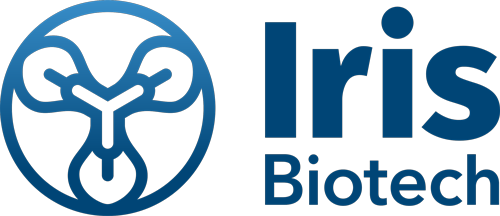Welcome to Iris Biotech
For better service please confirm your country and language we detected.

For better service please confirm your country and language we detected.

Thank you very much for your interest in our products. All prices listed on our website are ex-works, Germany, and may attract customs duties when imported.
You may/will be contacted by the shipping company for additional documentation that may be required by the US Customs for clearance.
We offer you the convenience of buying through a local partner, Peptide Solutions LLC who can import the shipment as well as prepay the customs duties and brokerage on your behalf and provide the convenience of a domestic sale.
Continue to Iris Biotech GmbHSend request to US distributorChemical name: 4-(Propargyloxycarbonyl)amino-L-phenylalanine hydrochloride // Synonyms: H-Phe(4-NH-Poc)*HCl, H-L-Aph(Poc)-OH*HCl, H-4Aph(Poc)*HCl, H-L-4Aph(Poc)-OH*HCl, H-L-4-Aph(Poc)-OH*HCl, H-p-amino-Phe(Poc)-OH*HCl, H-L-Phe(4-NH-Pryoc)-OH*HCl, H-4Aph(Pryoc)*HCl,H-L-4Aph(Pryoc)-OH*HC l, H-L-4-Aph(Pryoc)-OH*HCl, H-p-amino-Phe(Pryoc)-O
from $100.00
Used as a modified Phe or Tyr analogue in protein and peptide biosynthesis. Propargyloxycarbonyl, commonly abbreviated as Poc or Pryoc, can either be used as alkyne component for standard Click conjugation or in combination with tetrazine linkers in copper-free Diels-Alder type Click reactions. It also has applications as unusual protecting group for amines, hydroxy functions and as esters. All 3 are stable to neat TFA, but can be cleaved at ambient temperature with Co2(CO)8 in TFA:DCM. Deprotection with other transition metals like palladium have also been reported.
Bioorthogonal Catalysis: A General Method To Evaluate Metal-Catalyzed Reactions in Real Time in Living Systems Using a Cellular Luciferase Reporter System; H. T. Hsu, B. M. Trantow, R. M. Waymouth and P. A. Wender; Bioconjug Chem 2016; 27: 376-82. https://doi.org/10.1021/acs.bioconjchem.5b00469
N-alkynyl derivatives of 5-fluorouracil: susceptibility to palladium-mediated dealkylation and toxigenicity in cancer cell culture; J. T. Weiss, C. Fraser, B. Rubio-Ruiz, S. H. Myers, R. Crispin, J. C. Dawson, V. G. Brunton, E. E. Patton, N. O. Carragher and A. Unciti-Broceta; Front Chem 2014; 2: 56. https://doi.org/10.3389/fchem.2014.00056
Palladium-triggered deprotection chemistry for protein activation in living cells; J. Li, J. Yu, J. Zhao, J. Wang, S. Zheng, S. Lin, L. Chen, M. Yang, S. Jia, X. Zhang and P. R. Chen; Nat Chem 2014; 6: 352-61. https://doi.org/10.1038/nchem.1887
Propargyloxycarbonyl and propargyl groups for novel protection of amino, hydroxy, and carboxy functions; Y. Fukase, K. Fukase and S. Kusumoto; Tetrahedron Letters 1999; 40: 1169-1170. https://doi.org/10.1016/s0040-4039(98)02555-6
Please send me more information about







